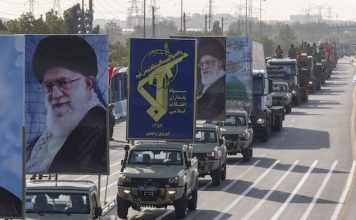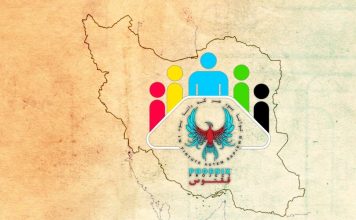By Kayhan Life Staff
Iran has unveiled its “Radionuclide Caesium-137” laboratory production project, the Iranian Government News Website said on Aug. 27, citing a report by the Public Diplomacy and Communication Office of the Atomic Energy Organization of Iran (AEOI).
Several senior officials from the Iranian nuclear industry, including Mohammad Eslami, Iranian Vice President and deputy director of AEOI, attended the unveiling ceremony on the fourth day of “Government Week.”
[aesop_image img=”https://kayhanlife.com/wp-content/uploads/2023/08/137-1.jpg” panorama=”off” credit=”Radionuclide Caesium-137. KL./” align=”center” lightbox=”on” captionsrc=”custom” captionposition=”left” revealfx=”off” overlay_revealfx=”off”]
“We unveiled a result of our self-belief today,” the Tehran-based Tasnim news agency reported, quoting Mr. Eslami. “Some say [Caesium-137 production] resulted from questionable research. With God’s help, the groundwork, combined with self-belief and [domestic] capabilities, has yielded results. Caesium-137 results from six months of hard work, coordination, and approved research.”
“Caesium-137 does not exist in nature and must be produced through uranium [nuclear] fission,” Eslami explained. “It [Caesium-137] is used in nuclear reactors, especially nuclear fuel, and is found in the nuclear byproducts. We have planned its production at the Nuclear Science and Technology Research Institute, given that the country needs this product and it is impossible to import it.”
“We will not stop our nuclear industry,” Eslami asserted. “Nuclear fuel is the cornerstone of atomic energy, and enrichment is the basis of nuclear fuel. If you can achieve this process, you can claim a nuclear industry. Nuclear industry is a significant development in science and technology that directly influences people’s lives.”
Cesium-137 is produced by nuclear fission for medical devices and gauges. It is also a byproduct of nuclear fission processes in nuclear reactors and nuclear weapons testing.
Although Caesium-137 is primarily found in medical equipment, it can potentially be used in “dirty bombs.”
“Cesium-137 is an isotope found in blood irradiators and other medical equipment in many countries around the world,” an article in the Nuclear Threat Initiative, a nonprofit (NRA), a global security organization based in Washington D.C., explained. “It is also the most dangerous of all radioactive isotopes. If cesium-137 were used in a dirty bomb, its highly dispersible powder would contaminate an area for years, costing billions of dollars in evacuation, demolition, and clean-up.”
According to Eslami, deputy director of the UN nuclear watchdog, the International Atomic Energy Agency (IAEA), will visit Iran soon.
“We continue to serve the country,” Eslami Added. “The Pars Isotope Company is open even on Fridays [Iranian weekend].”
In an article published on its website, the Tehran-based Pars Isotope Company said: “Caesium-137 or radiocaesium is a radioactive isotope of cesium, which is one of the best-known products of nuclear fission of uranium-235 and other fissile isotopes formed in nuclear reactors and nuclear weapons.”
According to the Pars Isotope Company, Caesium-137 is absorbed through the human skin and respiratory systems.
The U.S. Department of Treasury included the Pars Isotope Company in the list of Office of Foreign Assets Control (OFAC) Special Designated Nations and Blocked Persons (sanction list) on Nov. 5, 2018.
In the 1986 Chernobyl nuclear disaster, 80,000 TBq (Terabecquerel) Caesium-137 was reportedly released into the environment. Becquerel is the unit of radioactivity in the International System of Units. A trillion Becquerels is a Terabecquerel.
In June of this year, Russian authorities arrested five people who allegedly tried to smuggle one kilogram of Caesium-137 out of the country, the state-owned Sputnik news agency reported.











